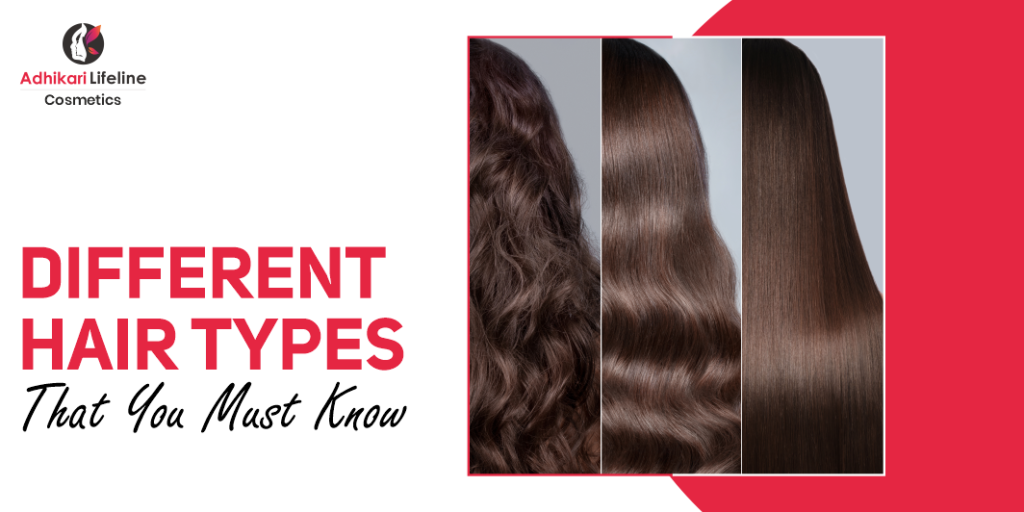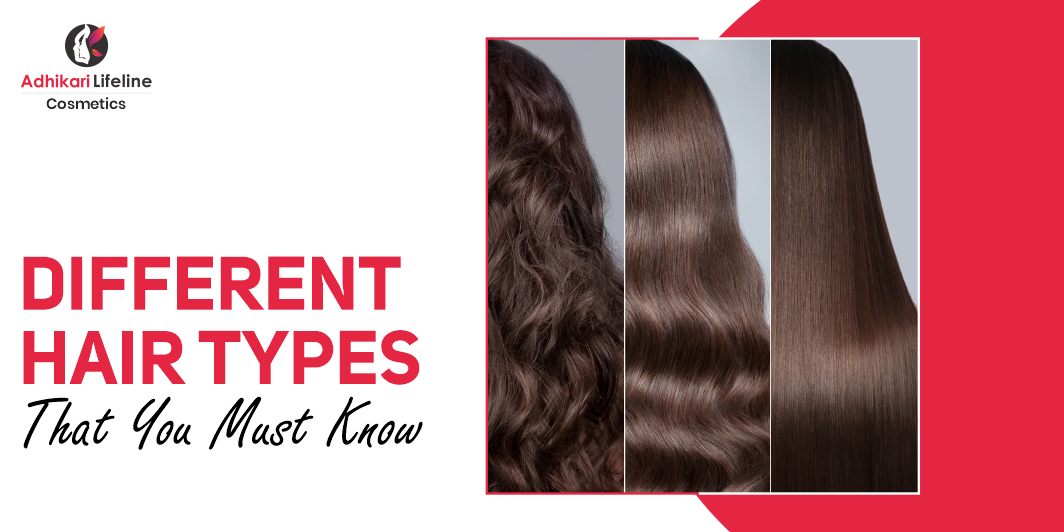December 28, 2023 By Adhikari Lifeline No comments yet
DIFFERENT HAIR TYPES THAT YOU MUST KNOW
DIFFERENT HAIR TYPES THAT YOU MUST KNOW
Understanding your hair type is essential for proper hair care and styling. Hair types can vary greatly, from straight and fine to curly and thick. Each hair type has unique characteristics and requires specific care routines and products. As one of the leading Hair Clinics in Boisar, we are here to help you explore the different hair types, how to determine your specific hair type, factors to consider when determining your hair type, and the optimal care routines for each hair type. Let’s get started!
Explaining Different Hair Types
- Straight Hair: Straight hair is characterized by its smooth, sleek appearance. It lacks natural curls or waves and tends to become oily quickly. People with straight hair often struggle with volume and body. They may need to use styling products and techniques to add texture and create the appearance of more voluminous hair. Regular washing and proper oil control are essential for maintaining the health and shine of straight hair.
- Wavy Hair: Wavy hair falls between straight and curly hair, forming loose, natural waves. It adds texture and volume to the hair. However, wavy hair can be prone to frizz and may require extra moisture to maintain its shape. People with wavy hair benefit from products that enhance and define their waves.
- Curly Hair: Curly hair is characterized by its natural curls or spirals, ranging from loose curls to tight coils. It tends to be drier and more prone to frizz. Specialized care, including deep conditioning and using products specifically for curly hair, is required to maintain its shape, definition, and hydration.
- Coily Hair: Coily hair, also known as afro-textured hair, has tight curls or coils that form a pattern. It is the most delicate and prone to dryness and breakage. Coily hair requires intense moisture and gentle handling to prevent damage. Regular use of leave-in conditioners, oils, and protective hairstyles is essential for maintaining the health and strength of oily hair.
Determining Your Specific Type of Hair
Determining your hair type is important for understanding your hair’s unique needs and selecting the right products and care routines. There are several factors to consider when determining your hair type:
- Hair Texture: Hair texture refers to the size of the individual hair strands. It can be fine, medium, or thick. Fine hair has small strands, while thick hair has larger strands. Knowing your hair texture is crucial for selecting appropriate products and styling techniques.
- Hair Density: Hair density refers to the number of hair strands on your scalp. It can range from low density (thin hair) to high density (thick hair). Understanding your hair density helps determine the appropriate care practices and styles for your hair. At Adhikari Lifeline Hair Clinic in Boisar, we can help you understand your hair density and perform cosmetic hair treatment if needed.
- Hair Porosity: Hair porosity refers to the hair’s ability to absorb and retain moisture. It can be low, medium, or high. Knowing your hair porosity helps in choosing the right products and developing a suitable hair care routine.
Using the Strand and Hair Porosity Tests for Accurate Hair Classification
To accurately classify your hair type, you can perform the strand and hair porosity tests. The strand test involves examining a single strand of hair to determine its thickness, curl pattern, and elasticity. The hair porosity test helps identify how well your hair absorbs and retains moisture by placing a strand in a glass of water and observing its behaviour.
Identifying and Assessing Different Hair Needs and Conditions
Once you determine your hair type, it is essential to identify and assess any specific needs or conditions your hair may have. This includes determining if your hair tends to be oily, dry, or prone to breakage. Understanding these factors will guide you in selecting the right hair care products and routines.
Understanding the Impact of Environmental Factors on Hair Type
Environmental factors, such as climate, humidity, and pollution, can significantly affect your hair type. These factors can cause frizz, dryness, or excessive oiliness. It is important to consider these influences and adjust your hair care routine accordingly.
Recognizing the Unique Characteristics of Your Hair Type
Each hair type has unique characteristics that require specific care and styling techniques. For example, curly hair may benefit from a moisturizing leave-in conditioner and a diffuser for heat styling, while straight hair may require regular trims and volumizing products. Understanding the distinct qualities of your hair type will help you achieve optimal results.
Specific Care Needs for Each Hair Type
- Curly and Coily Hair: Coily hair needs intense moisture, so deep conditioning treatments and leave-in conditioners are essential. Use products specifically formulated for curly hair and avoid heat styling to minimize damage.
- Straight and Wavy Hair: Straight and wavy hair types benefit from lightweight products that add volume and enhance texture. Regular shampooing and conditioning are important to prevent oil buildup. Heat styling tools can be used to create various styles.
- Fine and Thick Hair: Fine hair requires lightweight products that won’t weigh it down. It is prone to breakage, so gentle handling and minimal heat styling are recommended. Thick hair needs more moisture and can handle heavier products and heat styling.
Choosing Suitable Hair Care Products Based on Hair Type:
Selecting the right hair care products for your specific hair type is crucial for maintaining its health and appearance. Look for products that are formulated for your hair type, such as shampoos, conditioners, styling creams, and serums. Avoid products with harsh chemicals or ingredients that can cause dryness or damage.
Key Hair Care Tips for Maintenance
Regardless of your hair type, there are some general tips for maintaining healthy and vibrant hair:
- Follow a regular hair care routine, including washing, conditioning, and styling.
- Avoid excessive heat styling and use heat protectant products when necessary.
- Protect your hair from the sun, wind, and other environmental elements by wearing hats or scarves.
- Trim your hair regularly to remove split ends and promote healthy growth.
- Drink plenty of water and maintain a balanced diet for overall hair health.
Conclusion
Understanding your hair type is crucial for effective hair care and styling. By determining your specific hair type and addressing its unique needs, you can achieve healthier, more manageable hair. Adhikari Lifeline Hospital, the best hair clinic in Boisar, offers a range of cosmetic hair treatments and products to help you on this hair care journey. Consult with our hair cosmetic treatment experts to find the best solutions for your specific hair type. Book your appointment today!


Leave A Comment